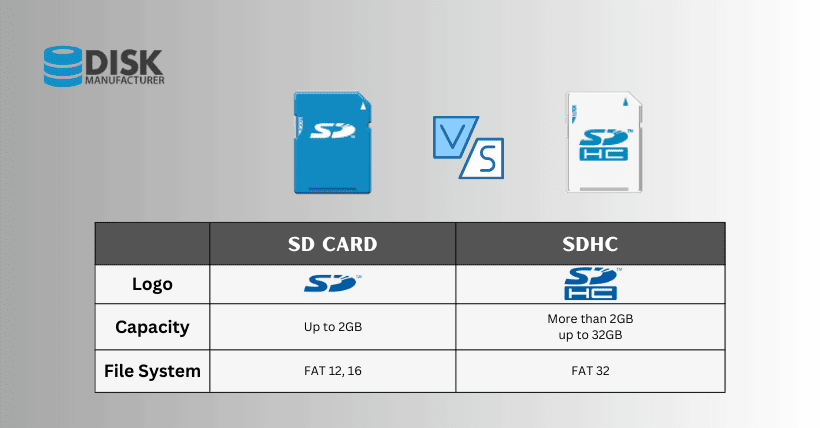Introduction
In the ever-evolving world of technology, storage solutions have become increasingly important. When it comes to portable memory cards, SD (Secure Digital) cards have been the go-to choice for many years. However, with the introduction of SDHC (Secure Digital High Capacity) cards, users are faced with a choice. In this article, we’ll explore the differences between SD cards and SDHC cards, helping you make an informed decision.
What is an SD Card?
SD cards are compact, removable memory cards that have become a standard in the world of digital storage. They are widely used in various devices such as cameras, smartphones, tablets, and portable gaming consoles. SD cards come in different sizes, including standard SD, miniSD, and microSD.
What is an SDHC Card?
SDHC cards, on the other hand, are an upgraded version of SD cards that offer higher storage capacity. The “HC” in SDHC stands for “High Capacity,” indicating its ability to hold larger amounts of data. SDHC cards are available in sizes ranging from 4GB to 32GB and are backward compatible with SD card slots.
Key Differences Between SD Card and SDHC:
- Capacity:
- SD cards generally offer storage capacities of up to 2GB, while SDHC cards start from 4GB and can go up to 32 GB.
- SDHC cards are ideal for users who require more storage space for their multimedia files, such as high-resolution photos and videos.
- File System:
- SD cards use the FAT16 file system, limiting individual file sizes to 2GB.
- SDHC cards utilize the FAT32 file system, allowing for larger individual file sizes.
- Speed Class:
- Both SD and SDHC cards have speed class ratings denoting their minimum write speeds.
- SD cards typically have lower speed class ratings compared to SDHC cards, which affects the transfer speed of data.
- Device Compatibility:
- SD cards are supported by a wide range of devices that have SD card slots.
- SDHC cards are backward compatible with SD card slots but may not work with older devices lacking SDHC compatibility.
- Performance:
- SDHC cards generally offer faster data transfer rates, enabling quicker file transfers and improved performance in devices like digital cameras.
- Price:
- SD cards are generally more affordable compared to SDHC cards, making them a cost-effective choice for users with lower storage needs.
Advantages of SD Cards:
- SD cards are compatible with a vast range of devices, making them widely accessible.
- They are available in various sizes, providing flexibility for different device requirements.
- SD cards are generally more affordable, making them a budget-friendly option.
Advantages of SDHC Cards:
- SDHC cards offer higher storage capacities, allowing users to store more files and data.
- They provide faster data transfer rates, improving overall performance.
- SDHC cards are backward compatible, ensuring compatibility with older SD card slots.
Limitations of SD Cards:
- The maximum capacity of SD cards is limited to 2GB, which may not suffice for users with extensive storage needs.
- The lower speed class ratings of SD cards can result in slower data transfer rates compared to SDHC cards.
- Some newer devices may not have SD card slots, limiting compatibility.
Limitations of SDHC Cards:
- The maximum capacity of SDHC cards is capped at 32GB, which may not be sufficient for users with very large data storage requirements.
- Older devices without SDHC compatibility may not support SDHC cards.
- SDHC cards are generally more expensive than SD cards, making them less cost-effective for users on a tight budget.
Conclusion
In conclusion, both SD cards and SDHC cards offer reliable storage solutions for various devices. The choice between the two depends on your specific needs and device compatibility. If you require higher storage capacity and faster data transfer rates, SDHC cards are the way to go. However, if you have limited storage needs and budget constraints, SD cards can still be a viable option. Consider the limitations and advantages of each before making your decision.
Frequently Asked Questions (FAQs):
Q1: Can I use an SD card in an SDHC-compatible device?
Yes, SD cards are compatible with SDHC-compatible devices.
Q2: Are SDHC cards faster than SD cards?
Generally, SDHC cards offer faster data transfer rates compared to SD cards.
Q3: Can I use an SDHC card in an older device without SDHC compatibility?
No, older devices without SDHC compatibility may not support SDHC cards.
Q4: Which is more cost-effective, SD cards or SDHC cards?
SD cards are generally more affordable, while SDHC cards tend to be more expensive.
Q5: What is the maximum storage capacity of SDHC cards?
SDHC cards can hold a maximum of 32GB of data.

Related:








